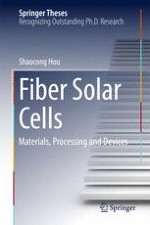2017 | Buch
Über dieses Buch
This thesis presents the fundamental research and latest findings on novel flexible/wearable photovoltaic technology, and comprehensively summarizes the rapid developments in flexible photovoltaics, from traditional planar solar cells to fiber solar cells. It discusses the rational design of fiber solar cell materials, electrodes and devices, as well as critical factors including cost, efficiency, flexibility and stability . Furthermore, it addresses fundamental theoretical principles and novel fabrication technologies and their potential applications. The book provides practical information for university researchers and graduate students interested in flexible fiber photovoltaics, and inspires them to design other novel flexible/wearable electronics and textiles.
Anzeige
